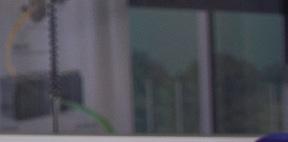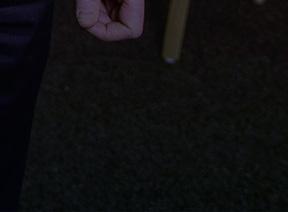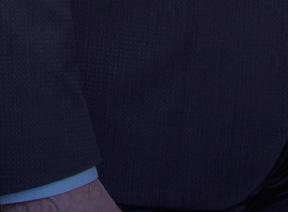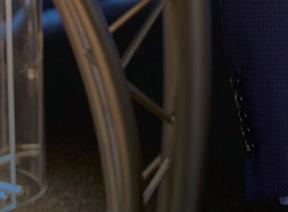
7 minute read
Software savvy in the digital era
As the electronics industry evolves into the new digital era, companies are working harder than ever to manage complexity and get to market faster. But with shortening product lifecycles, how do you stay at the leading edge? For Siemens, it’s about harnessing this complexity for a competitive advantage.
Collin Arocho
Advertisement
Since its earliest innovation, which relayed telegraphic communications by using needles to point to a series of letters rather than utilizing Morse code, Siemens has spent the better part of two centuries at the forefront of technological development. But to become the high-tech titan of today, employing some 400,000 people globally, success hasn’t come without a willingness to change it up. According to the Siemens software group’s Vice President of Electronics and Semiconductor Industry Fram Akiki, it’s the company’s ability to continually adapt that has kept it on the cutting edge of technology solutions.
“Over the last four decades, innovation in electronics and semiconductors have really propelled a tremendous evolution in products and services. I tend to break this timeline down into three di erent eras, the compute, connected and the current digital eras,” describes Akiki. “ e progression to modern-day electronics started in the late 70s with the mainframe computer, and ultimately the PC and laptop. is was enabled by the development of microprocessors and memory chips. Similarly, in the 2000s, the connected era kicked o with the advent of the iconic smartphone device, pushing semiconductors to further develop communication technologies like cellular wireless – 3G, 4G and now 5G. As these technologies have matured and become widespread, we’re starting to enter into the third phase: digitalization.”
Speed and complexity
But what are the trends that are driving this push to the digital era and how does Siemens stay at the leading edge? One way the technology juggernaut gets insight into the market is by engaging its broad customer base. “We hold a regular executive council and bring in around 20 senior executives, vice presidents and C-level-suite folks, from our customer base. We discuss opportunities and trends in the industry, as well as how they’re evolving,” explains Akiki. “Recently, we held one in Shanghai, China. What we learned is that, across the board, there are two key trends emerging in the electronics and semiconductor industry. First, the always important time to market, and second, the explosion of complexity.”
From this council, it was clear that a main concern was that product lifecycles are getting shorter. Suddenly, getting a product to market as fast as possible isn’t just a luxury, it’s mission critical to succeed, or even survive, in the competitive market. “When we look at the mainframe computer, from the compute era, these products could have 5 or even 10-year lifecycles. Today, in the digital era, we see product lifecycles of less than a year. Any delay to the market can prove catastrophic,” says Akiki. e second major trend to arise at the executive council was the explosion of complexity – on multiple fronts. “Of course, there’s technical complexity with products becoming smaller and smarter at the same time – packing more and more functions into a small space. But there’s also other complexities associated with diverse supply chains and the sometimes-unpredictable nature of consumer demand,” Akiki suggests.
Cooking
Dealing with this complexity can be tricky for high-tech companies, but one asset that Siemens uses to its bene t is its sheer size. With a broad reach across the high-tech industry, the company can look in-house for innovative solutions that can be used across its various departments and locations. “One of the big features for Siemens is that we eat our own cooking. One example is our software solutions. ese are used for everything from design to manufacturing to analytics. It’s used quite extensively inside the broader Siemens, including roughly 250 manufacturing facilities worldwide,” highlights Akiki. “ at o ers a big advantage to our software customers, because we can bring in both existing and potential clients to a Siemens facility and show them exactly how it works – from Chengdu, China to Hamburg, Germany to San Diego, California. Siemens isn’t only talking the talk, but
we’re also walking the walk and learning from our own experience when it comes to our solutions.”
As the big names in the industry are inundated with new trends and customer demands, placing a focus on R&D and new innovation projects isn’t always straightforward. Because of this, larger enterprises are increasingly looking for a boost from smaller businesses through acquisitions and investment. “A lot of the innovation in today’s electronics and semiconductor industry is coming from startups and small to medium businesses. Larger enterprises are starting to embrace this reality and are creating venture capital fi rms to incubate and often take a stake in exciting new technologies,” explains Akiki. “Siemens also has a number of investment arms. We recognize that, while it’s great to eat your own cooking, you have to fi nd a balance to avoid the ‘not invented here’ type of mentality.”
Mentor
One recent acquisition to strengthen the Siemens software portfolio is that of

Mentor Graphics. With the addition of Mentor’s EDA platforms, Siemens now provides customers with sophisticated digital twin technology from the transistor level to the IC level, up to its performance and behavior within a product’s subsystems and end-product – simulating each element of a chip’s development, from production, to realization, to full lifecycle management.
According to Akiki, this purchase had a big impact on the company’s transition to the era of digitalization. “Th e Mentor acquisition is big for Siemens. It allows us to expand our digital thread capabilities both horizontally and vertically. It enabled us to take our expertise in mechanical CAD
Soon after speaking with Bits&Chips, Fram Akiki announced he was stepping down as Vice President of Electronics and Semiconductor Industry at Siemens. His departure came into eff ect on 17 April 2020. software and fuse it with the electrical CAD software from Mentor. Th is off ers a complete collaborative solution, including electrical, mechanical and even simulation – bringing that all together,” emphasizes Akiki. “Th is is very important for some of these markets where we’re seeing the digital transformation take off , like in smart-connected devices and the automotive industry.”
As we approach the next big phases of the technology transition, toward 5G and Industry 4.0, as well as AI and autonomous driving, Akiki believes this is just a tip of what electronics and silicon will become. “The trend we’re seeing, as we move further into the digital era, is that semiconductors are delivering an increasingly higher percentage of the value in electronic systems,” he underscores. “The impact of semiconductors, in terms of what they deliver to an electronic system, is growing, and certainly with Mentor, and its EDA expertise, we feel that we’re uniquely positioned to be able to continue to drive that trend.”
An essential piece to the puzzle






To achieve enhanced communication between units, Omron’s R&D manager Tim Foreman turns to trainings and courses. “We have some incredibly bright employees at Omron, all of them very technically gifted, be it in software, mathematics or electronics. “While especially skilled, our engineers sometimes don’t have the tools or experience to effectively convey their message. In the high tech world, that’s an essential piece to the puzzle.”



From its first innovation of accurate x-ray control timers, to the magnetic strips on credit cards, early ATMs and digital blood pressure monitors used at doctor’s offices – Omron has been at it for more than eight decades.
















